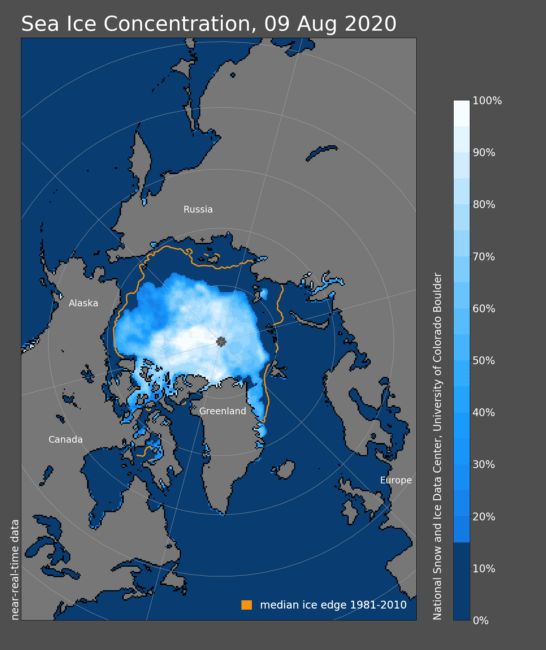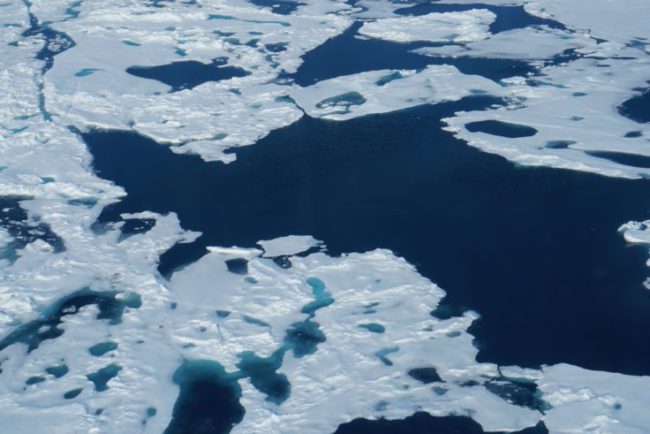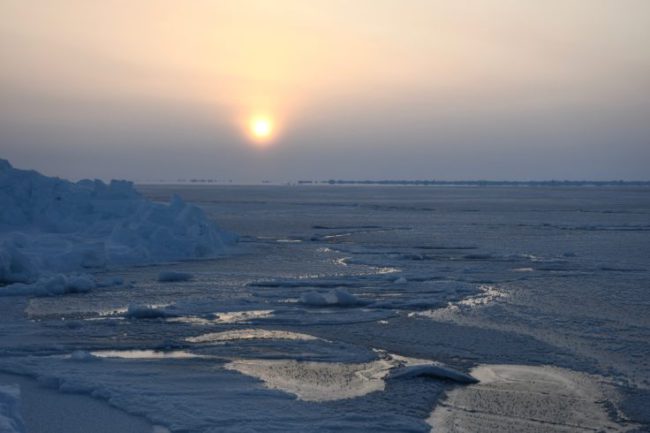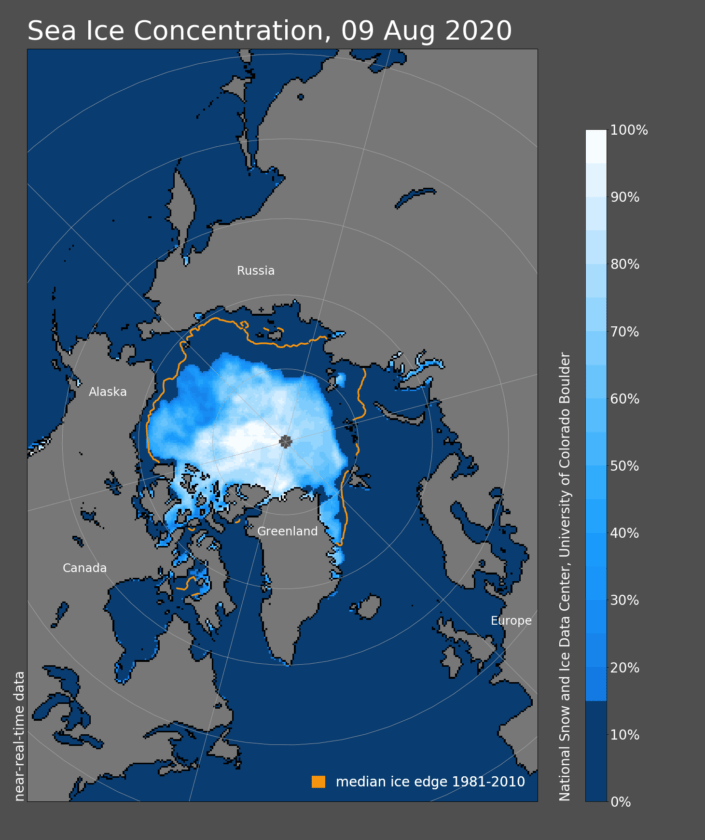
In a warming world where each and every year more and more of the arctic sea ice is being lost, will we ever see a summer where there is no ice at all in the Arctic ocean?
An international team of researchers has just published a paper that gives us a very reasonable answer.
Let’s take a look.
Study: Sea-ice-free Arctic during the Last Interglacial supports fast future loss
Published in Nature Climate Change on Aug 10, 2020, it compares Arctic sea ice conditions during the last interglacial with present day.
High temperatures in the Arctic during the last interglacial – the warm period around 127,000 years ago – have puzzled scientists for decades. The new study utilised the UK Met Office’s Hadley Centre climate model to understand what happened then, and also give us insights into how things will unfold for us now.
The Role of Melt Ponds
During spring and early summer, shallow pools of water form on the surface of Arctic sea-ice. These ‘melt ponds’ are important for how much sunlight is absorbed by the ice and how much is reflected back into space. The new Hadley Centre model is the UK’s most advanced physical representation of the Earth’s climate and a critical tool for climate research and incorporates sea-ice and melt ponds.
Using the model to look at the sea ice during the last interglacial, the team concludes that the impact of intense springtime sunshine created many melt ponds, which played a crucial role in sea-ice melt.

Darker melt ponds absorb solar radiation and the white ice reflects it back out into space. The more melt ponds there are the greater the amount of energy being absorbed. It becomes a feedback loop.
So when do we go Ice Free in summer?
A simulation of the future using the same model indicates that the Arctic may become sea ice-free by 2035.
Study Author Comments
Joint lead author Dr Maria Vittoria Guarino, Earth System Modeller at British Antarctic Survey (BAS), says:
“High temperatures in the Arctic have puzzled scientists for decades. Unravelling this mystery was technically and scientifically challenging. For the first time, we can begin to see how the Arctic became sea ice-free during the last interglacial. The advances made in climate modelling means that we can create a more accurate simulation of the Earth’s past climate, which, in turn gives us greater confidence in model predictions for the future.”
Dr Louise Sime, the group head of the Palaeoclimate group and joint lead author at BAS, says:
“We know the Arctic is undergoing significant changes as our planet warms. By understanding what happened during Earth’s last warm period we are in a better position to understand what will happen in the future. The prospect of loss of sea-ice by 2035 should really be focussing all our minds on achieving a low-carbon world as soon as humanly feasible.”
Dr David Schroeder and Prof Danny Feltham from the University of Reading, who developed and co-led the implementation of the melt pond scheme in the climate model, say:
“This shows just how important sea-ice processes like melt ponds are in the Arctic, and why it is crucial that they are incorporated into climate models.”

Arctic Sea Ice Tweets
Posting Source:
Materials provided by British Antarctic Survey.
Journal Reference:
- Maria-Vittoria Guarino, Louise C. Sime, David Schröeder, Irene Malmierca-Vallet, Erica Rosenblum, Mark Ringer, Jeff Ridley, Danny Feltham, Cecilia Bitz, Eric J. Steig, Eric Wolff, Julienne Stroeve, Alistair Sellar. Sea-ice-free Arctic during the Last Interglacial supports fast future loss. Nature Climate Change, 2020; DOI: 10.1038/s41558-020-0865-2
